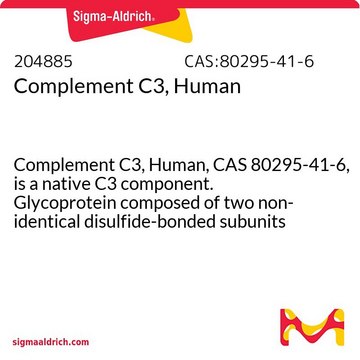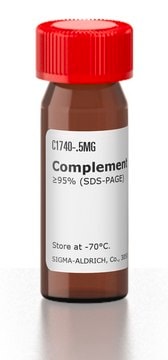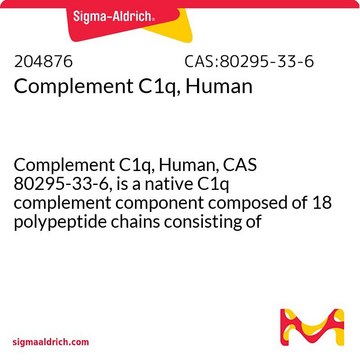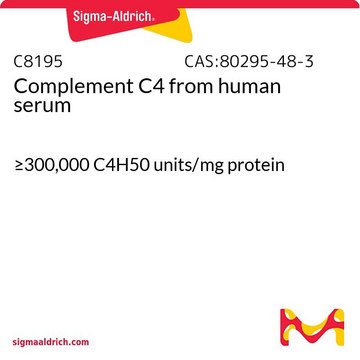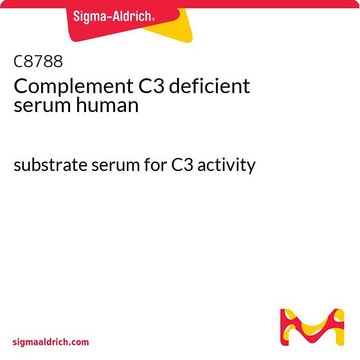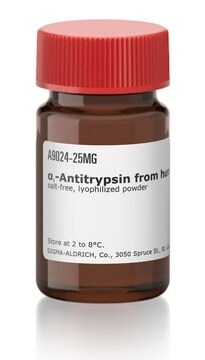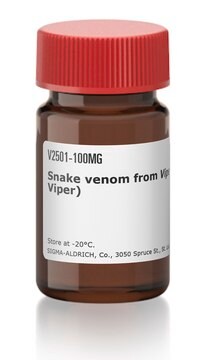추천 제품
애플리케이션
Complement C3 is important in complement activation through the classical and alternative pathways. Complement C3 has been used in studies of bacterial defense against the complement system. Research on streptococcus infection has shown that Streptococcal pyrogenic exotoxin B (SPE B), a cysteine protease, can prevent phagocytic activity via cleavage of the C3 and impairing the pathways of the compliment system. C3 deficiency can result in recurrent infections and immune complex disorders. Recent research has shown that inherited C3 deficiency can occur either through homozygous mutations or through compound heterozygous mutations,
생화학적/생리학적 작용
Complement C3 is the third and most abundant component of the complement pathway. It plays a central role in complement activation, being involved in both the classical and alternative pathways. C3 or its proteolytic fragments mediate many biological functions such as opsonization and anaphylatoxin activities. Pro-C3 is synthesized as a large single chain of 185 kDa and is processed to a disulfide-linked heterodimer consisting of an α-chain (115 kDa) and a β-chain (70 kDa) in the plasma. C3 is cleaved by the C3 convertases in either pathway (C4b2a, C3iBb, C3bBb) to C3b (176 kDa) comprised of the large C-terminal portion of the α-chain and the β-chain. C3b interacts with other complement components to initiate the amplification cascade. Studies of C3 function have been facilitated by experimentally induced C3 deficiency in animals by injection of cobra venom factor and more recently with gene ablation technology.
품질
Functionally pure by a hemolytic assay using deficient sera.
물리적 형태
Supplied as a solution in PBS, pH 7.2.
기타 정보
View more information on the complement pathway at www.sigma-aldrich.com/enzymeexplorer
면책조항
RESEARCH USE ONLY. This product is regulated in France when intended to be used for scientific purposes, including for import and export activities (Article L 1211-1 paragraph 2 of the Public Health Code). The purchaser (i.e. enduser) is required to obtain an import authorization from the France Ministry of Research referred in the Article L1245-5-1 II. of Public Health Code. By ordering this product, you are confirming that you have obtained the proper import authorization.
Storage Class Code
10 - Combustible liquids
WGK
WGK 3
Flash Point (°F)
Not applicable
Flash Point (°C)
Not applicable
이미 열람한 고객
Yutaka Terao et al.
The Journal of biological chemistry, 283(10), 6253-6260 (2007-12-28)
A relative lack of neutrophils around Streptococcus pyogenes is observed in streptococcal toxic shock syndrome (STSS). Because the bacteria spread rapidly into various organs in STSS, we speculated that S. pyogenes is equipped with molecules to evade the host innate
Bin Li et al.
Toxicological sciences : an official journal of the Society of Toxicology, 107(1), 144-155 (2008-10-22)
The expectation from the literature is that organophosphorus (OP) agents bind to proteins that have an active site serine. However, transferrin, a protein with no active site serine, was covalently modified in vitro by 0.5mM 10-fluoroethoxyphosphinyl-N-biotinamido pentyldecanamide, chlorpyrifos oxon, diisopropylfluorophosphate
Chih-Feng Kuo et al.
Infection and immunity, 76(3), 1163-1169 (2008-01-05)
Streptococcal pyrogenic exotoxin B (SPE B), a cysteine protease, is an important virulence factor in group A streptococcus (GAS) infection. The inhibition of phagocytic activity by SPE B may help prevent bacteria from being ingested. In this study, we examined
P Randhawa et al.
American journal of transplantation : official journal of the American Society of Transplantation and the American Society of Transplant Surgeons, 15(4), 1014-1020 (2015-03-05)
Neutralizing antibodies (NAbs) form the basis of immunotherapeutic strategies against many important human viral infections. Accordingly, we studied the prevalence, titer, genotype-specificity, and mechanism of action of anti-polyomavirus BK (BKV) NAbs in commercially available human immune globulin (IG) preparations designed
L Singer et al.
Pathobiology : journal of immunopathology, molecular and cellular biology, 62(1), 14-28 (1994-01-01)
The third complement component (C3) is a multifunctional glycoprotein that interacts with numerous serum proteins, cell surface receptors, and membrane-associated regulatory proteins. Deficiencies of C3 have been reported in several human kindred of different ethnic backgrounds and from different geographic
자사의 과학자팀은 생명 과학, 재료 과학, 화학 합성, 크로마토그래피, 분석 및 기타 많은 영역을 포함한 모든 과학 분야에 경험이 있습니다..
고객지원팀으로 연락바랍니다.